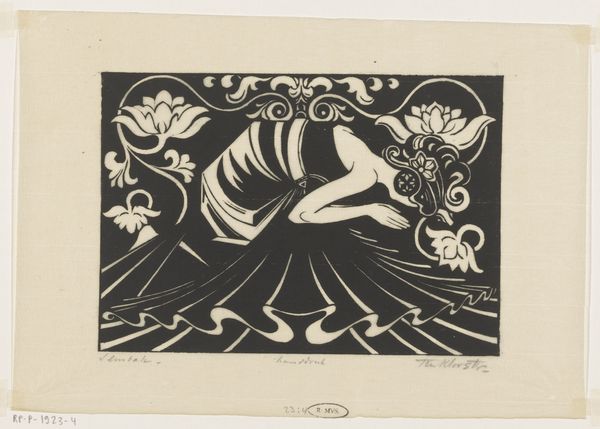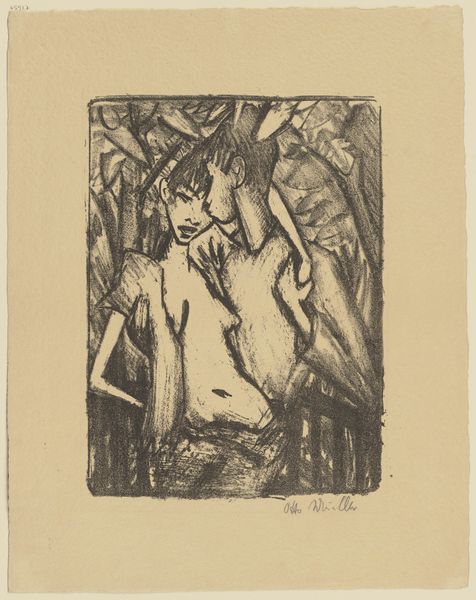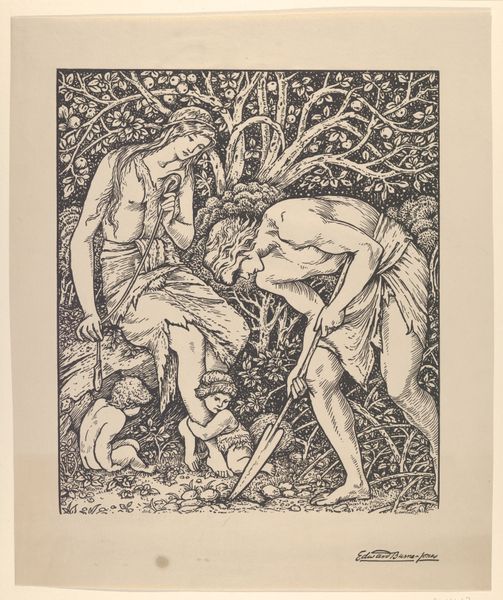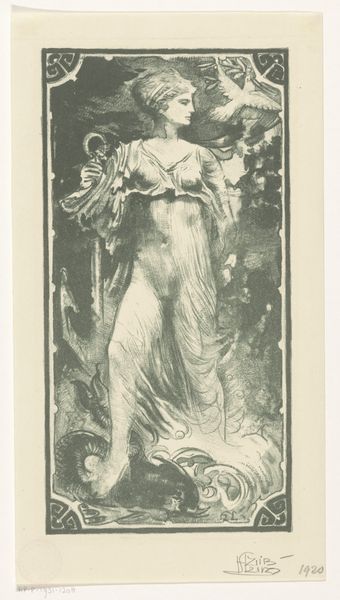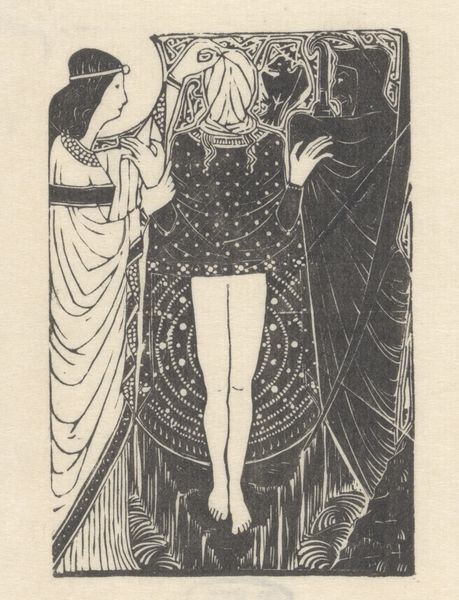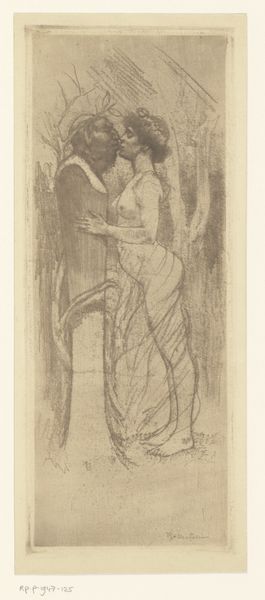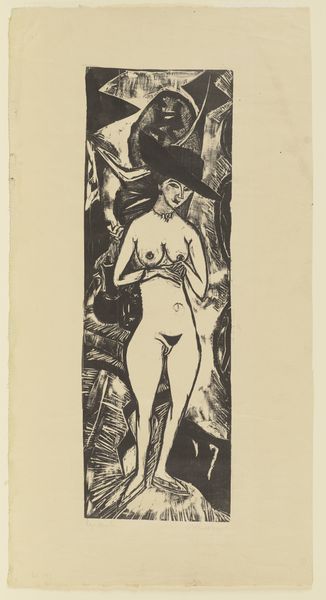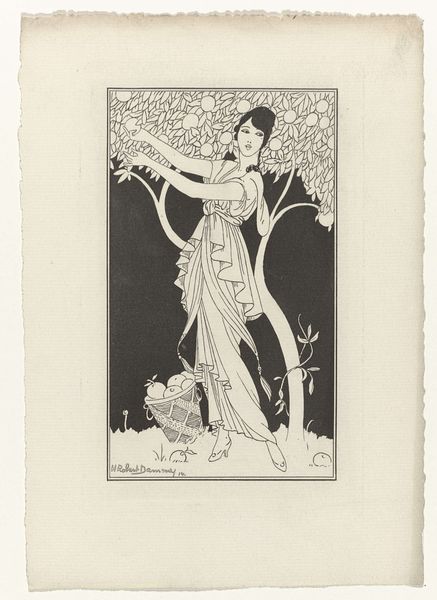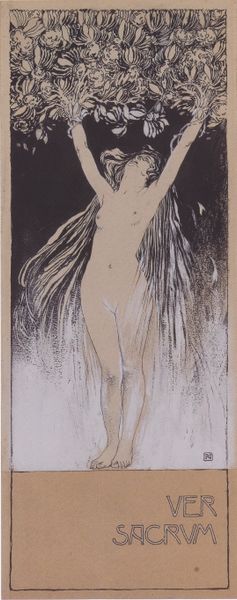
print, woodcut
# print
#
old engraving style
#
caricature
#
figuration
#
expressionism
#
woodcut
#
line
#
symbolism
Dimensions: height 135 mm, width 84 mm
Copyright: Rijks Museum: Open Domain
Editor: This is “Nacht” by Bernard Essers, probably created between 1903 and 1931. It's a woodcut print, and it's very striking. I'm immediately drawn to the contrast between the dark background and the light figures, creating a rather melancholic mood. How do you interpret this work? Curator: The melancholy you perceive is palpable, isn't it? Consider this piece within the context of Expressionism and its focus on subjective experience. Look at how Essers uses sharp, contrasting lines and simplified forms. The woodcut medium itself, with its inherent starkness, reinforces a feeling of emotional rawness. Where do you think the artist stands politically in this period of social upheaval in Germany? Editor: Politically? I hadn't considered that. I was just thinking about the visual elements, the symbolism of the flower, the contrasting figures. But, now that you mention it, there’s a feeling of oppression, or at least profound sadness. It's like a commentary on something, right? The bowed figure seems burdened. Curator: Exactly! Think about the historical context. Essers lived through a time of immense social and political change. Doesn't this work resonate with a sense of disillusionment common during that time? The elongated figure with her arms extended suggests a search for answers. Where are her eyes directed and what implications does this pose, considering themes of symbolism and gender within this visual landscape? Editor: That's a powerful point. Her gaze directed towards the heavens is thought-provoking in contrast to the hunched, seemingly defeated figure. And the single flower almost feels like a symbol of hope. I now see the social commentary alongside the personal expression. Curator: It’s in that very interplay – the personal grappling with larger socio-political anxieties – that this work truly finds its resonance, isn’t it? Seeing art through a lens that accounts for gender, race and class enables us to gleam deeper meaning and interpret work with nuanced perspicacity. Editor: Absolutely. I'm starting to appreciate how deeply intertwined art and history truly are. Thanks, this has totally shifted my perspective.
Comments
No comments
Be the first to comment and join the conversation on the ultimate creative platform.

